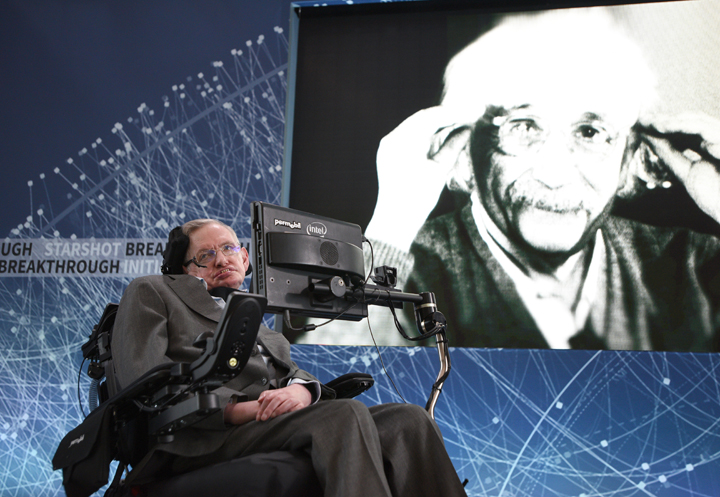Are we alone? It’s the question that we’ve been asking since we began to understand our cosmos. Now, Stephen Hawking, together with Facebook founder Mark Zuckerberg and Russian enterpreneur Yuri Milner, want to send a spacecraft to another star to help answer that question.

Breakthrough Initiatives, founded in 2015 by Milner and his wife Julia, is a venture seeking to find evidence of intelligent life. There are currently three separate projects dedicated to this task: Breakthrough Listen, Breakthrough Message and Breakthrough Starshot.
READ MORE: Are we missing E.T.’s call? Astrophysicists suggest better method to listen for alien signals
It’s Starshot — an innovative and an almost wild idea — on which the three men are collaborating.
Though humans are in the space-faring age — living and working in space, sending spacecraft to planets throughout our solar system, and plans to head to Mars — we are mere infants. There are many challenges when it comes to heading out into deep space. One of the biggest is speed.
Space is vast, in ways that our human minds have difficulty grasping. The nearest star to us is Alpha Centauri, just over four light-years away. That means, if we could travel at the speed of light — 300,000 kilometres per second — it would take us four years to get there. And, according to Einstein’s theory of special relativity, nothing can travel at light speed.
But even if we could travel at close to light speed, we’re far behind. To give you an idea just how slow we are, the fastest spacecraft we’ve ever launched was New Horizons, the mission to Pluto. How fast was it? It travelled roughly 45 km/s.
So, if we truly want to voyage to other star systems, we need to figure out how to do so much, much faster.
WATCH: 16X9—The Search for Life
This is what Starshot is all about. The idea involves using ground-based lasers that push tiny, ultra-light spacecraft attached to lightsails (sails that are powered by photons, or light). This would allow them to reach speeds of roughly 160 million km/h, or 44,704 km/s. At this speed a spacecraft could be reach its destination within 20 years.
“Albert Einstein once imagined riding on a light beam, and his thought experiment led him to the theory of special relativity,” Hawking posted on Facebook. “A little over a century later, we have the chance to attain a significant fraction of that speed: 100 million miles an hour.
“Only by going that fast can we reach the stars on the time-scale of a human life.”
And the group is setting its sights on Alpha Centauri.
This star is actually part of a binary-star system (there is a third star there, but it’s unknown if it is truly part of the system). Proxima Centauri is the closest of the two to us. There is even speculation that an Earth-like planet (or two) exist there. So it is a choice destination.
READ MORE: Mysterious ‘alien’ star gets even stranger
Of course, don’t think we’ll be heading out any time soon. The project is really in its infancy: Breakthrough Initiatives has a list, and it’s a lengthy one. It includes photon thrusters, cameras, batteries, and even the structure and coating of the lightsail itself.
Though it may seem like we have a long way to go — the plan is to get the spacecraft ready for the next generation — it shows that we are already thinking outside conventional means of space travel, and could be the first step in answering the question: are we alone in the universe?




Comments